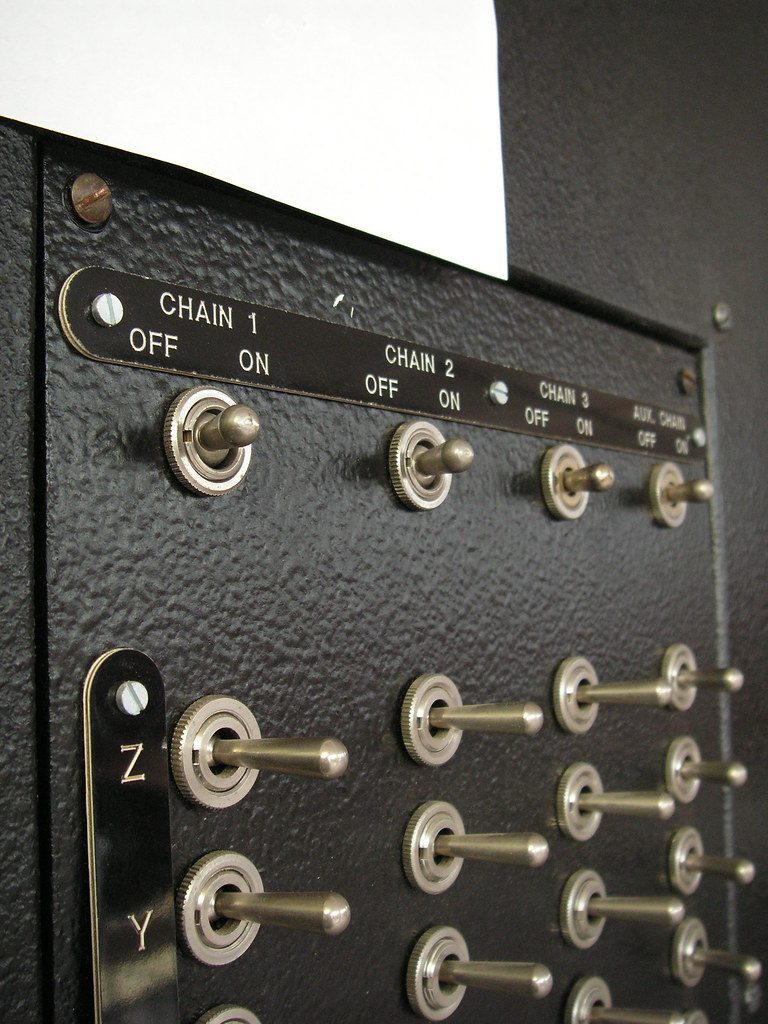Imagine the answer to life, the universe, and everything is: donut.
In a world of Fast Things, 3D Printing is the logical production technology. With our technology, you can go from idea to file to part quicker than with alternatives. If your idea, file, or part changes, it will also take you less time to get to a new part. If you want to make a million identical copies of something then injection molding, for one, would be a much better technology. It is very good at making a million of something, once you have made the tooling and the mold. In this instance, injection molding is far cheaper per part. The set up in time and cost is considerable, however. 3D Printing will give you a higher per part cost, but this cost will be approximately the same should you want a million unique things.

In a one size fits all world, injection molding is still king. But, if time, shape or texture force you to make a few of something 3D Printing becomes the only viable option. With 3D Printing, you can produce one or a few of something with a particular shape at a specific time. So the question “when will 3D printing go mainstream” is a fundamentally incorrect one. It is a sure sign of a mind who has not been opened to the fundamental possibilities that 3D Printing will unlock.
When does a computer make sense for adding up sums? For most sums that we do a calculator would still be far superior and faster. A piece of paper and a sound mind would have outperformed computers for a reasonable length of time if the time to input the calculation were taken into account. When does it make sense to buy a computer for adding up things? In isolation, never I should think. Only for niche things like figuring out the yield of a nuclear weapon or the weather would such a device warrant an investment. Unless of course, the advent of such a computing device ignites the imaginations of many to the possibility of adding up the hereto un-addable.

If we start to then think of calculating the cost of all of our products or tracking all of the things that we sell in an efficient way our mind opens to the possibilities of increasing our profitability using computers. Perhaps for calculating stuff, it doesn’t make sense, but if we wanted to calculate everything, it may. The universal calculation machine is, therefore, a receptacle of unmet needs in calculation. The incalculable becomes what drives adoption for such a device. But, at this point, it is the most part, like many technologies, hope, and spielerei.
The thing that starts to make the machine powerful is the realization that the input cards are not just grist for the mill. The stuff that you have to do in order to get the computer to do anything is not only a protocol to be followed. Instead, this is a key to getting a universal calculation machine to in a versatile and rapid manner make all kinds of calculations. The manipulation of software and code is a revolution.
The first revolution of language let us communicate with each other through speech. The second let us store and disseminate writing through Printing. In the third, we learned to speak the language of the universe: maths. The fourth is the language of building in the universe: engineering. In the fifth we learned the language for manipulating the universe: chemistry and the sixth is the language of inception and destruction physics. The seventh language is that now Babylonian mess that is those languages of the computer that let us speak and calculate in all of the aforementioned. 3D Printing combined with CAD is the language of form, the eighth. It lets us at a higher abstraction level at different magnifications describe and create forms that exist, manipulate, and function in the world.

This may all sound a tad vague and perhaps a little bit ganja around the Goan bonfire kind of stuff. I do believe that this metaphor has merit, however. I’ve been trying to explain, unsuccessfully, the impact of 3D Printing for over a decade. And you know what? I suck at it. Even at hype’s apex, people were excited for all the wrong reasons. Yes, this is vague, but at this abstraction level, I can at least make a stab at getting you to understand why nothing will be the same again.
If we create forms, not calculations, drawings, 3D models, databases, then the world is approachable not through data or mathematics but through mimicking, designing, doodling, randomly getting, intuiting, having algorithms make, brute force creating a shape. Imagine the answer to life the universe, and everything is: donut. Imagine that you had no idea how a plane works, but you could make a lighter one by following the same set of rules as you do through making lighter chairs. Imagine that you could take a hole punch to a building and it becomes a better building. Imagine that you could not know any chemistry, engineering or physics but through a random shape generator come up with a better shampoo, nuclear reactor or Formula One engine. Imagine all the bets are off, and all the things are plastic. People often wonder if 3D Printing will make designers obsolete. Well, what if it makes everyone who is not a designer obsolete?
Jeff Bezos has to know very little about fashion to conquer the clothing market. He doesn’t need to know how to make cotton, dye it, or make a sock to sell millions of them. He doesn’t need a clothing brand, a factory, or an ounce of product. Nor does he need to know anything about tea, teapots, knives, closets or watches. He needs people to build him an unending river of commerce that they can then use to sell everything and anything to everyone. Yes, Amazon has marketing people and HR, but their power is through the creation of systems that sell products.

Similarly, Google does not have to know anything; it just has to be able to make coherent all the information that there is through it. Facebook did not need to know you; you would tell it everything so that it could connect you with those that you already knew. In each of these cases, a powerful idea coupled with capital and code became an incredibly large business.
The work in the trenches was done by those who code. Code and the internet shaped these ideas into industry killers. But the internet concerns itself chiefly with access to people and information; stripping the layers of sales channels away to create billions of dollars in reappropriated collated information which now has value for the organizer. There are exceptions of course, but generally, this is the way of the internet. Famously one of the largest hotel booking sites in the world has no hotels, nor do they know how to operate them, nor do they have to buy them. The new way is not only faster but also more efficient because, by design, the startup goes for matching demand, circumventing the problematic and capital intensive stuff.
Imagine in a similar way that you could use the pure form to enter any industry. Imagine that by designing the right shape to solve a problem, you could compete with most products. Imagine that you would not need to understand the shape or the problem or the solution necessarily. The shape only would have to work. I don’t have to understand women, men, love, or dating to have the worlds most successful dating site. My skillset is just in creating a platform that brings enough needs together for them to coalesce into a solution that is better than anyone else’s.

Dr. J.W. Mauchly with the electronic computing machine known as the ENIAC.
3D Printing is technology where we can in a timely way, make a vast variety of different shapes efficiently based on a file or an idea. And should the file, idea or shape not suffice; quicker than alternative technologies we can make a new version. So just like all bugs are shallow given enough eyeballs, all things are shallow given enough eyeballs as well. We do not have to understand your industry, or engineering, or physics, or things to create better solution shapes to your problem. We can simply plug away at it, test and make new things quicker than you. As a code based internet startup leverages attention and users to match solutions we have to in a brute force way to test enough shapes for fitness and then produce the winners. If we intuit a solution or can skip some steps through experience or physics knowledge, that is fine. But strictly speaking, we can be ignorant of anything except for the shape game to ultimately succeed.
Many an engineering, chemistry, or business problem is a shape looking for a solution or a problem looking for the right shape to solve it; and this is the true value of 3D Printing. Don’t be a pirate or a ninja; be Mrs. Incredible.
Flickr: Tom Page, Matt Gibson, Tulio Saba. Richard Gillin, Andy L.
Subscribe to Our Email Newsletter
Stay up-to-date on all the latest news from the 3D printing industry and receive information and offers from third party vendors.
You May Also Like
HP & INDO-MIM Collaborate to Boost Metal 3D Printing in India
HP Inc. and INDO-MIM, a US- and India-based supplier of metal injection molding (MIM) powders and contract manufacturer, have announced that the two companies will collaborate to accelerate additive manufacturing...
New Report: Semiconductor Industry to See $1.4B in 3D Printing Revenues by 2032
“The semiconductor sector has become the most strategically significant area of global industry.” Truer words are hard to come by when it comes to the modern world, and they are...
One of US’s Largest Machine Tool Resellers to Offer Stratasys 3D Printing
In a key move for the additive manufacturing (AM) stalwart, Stratasys (Nasdaq: SSYS) has announced a strategic partnership with Select Additive Technologies, a division of Morris Group, Inc., which is...
3D Printing Unpeeled: Orbex Investment, IndoMIM and HP, Ultrasonic Waves
INDO-MIM has bought three HP Metal Jet S100 printers, operating two in India and one in Texas. This is a win for HP because the company has deep experience in...





























